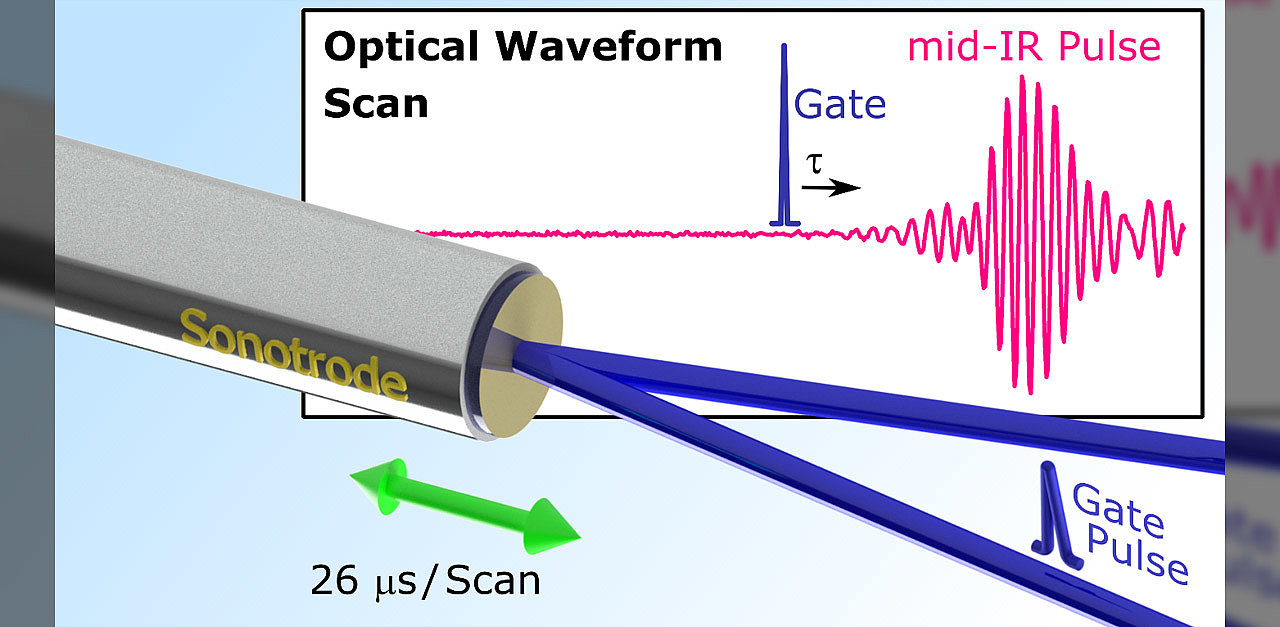We report measurements of the full electric field of octave-spanning mid-infrared pulses at acquisition rates of 38 kHz. The experiment combines field-resolved detection by electro-optic sampling with the ultra-rapid scanning of a mirror using an ultrasonic sonotrode, and was performed in collaboration with Prof. Joachim Heberle (Freie Universität Berlin). Electro-optic sampling (EOS) has evolved as a technique to directly capture the electric field of laser pulses and spectroscopic signals. EOS shares with other time-domain techniques the need to record signals by scanning optical delays. Conventional delay stages typically operate at Hertz scan rates, accumulating low-frequency laser noise over the duration of a scan, and limiting the potential of scanning (time-domain) spectroscopies to capture fast processes. By moving a mirror with an ultrasonic sonotrode, the team increased the speed for a single scan to such an extent that the electric field of octave-spanning mid-infrared pulses centered at 9 µm was recorded in only 26 µs. Using an auxiliary laser, the delay of the freely moving sonotrode was tracked and calibrated with single-digit attosecond precision. With this technology, hundreds of thousands of EOS traces were consistently recorded over multiple seconds of acquisition time, and the capability to overcome the noise limitations of conventional scanning was demonstrated. Direct applications of ultra-rapid electro-optic sampling are expected in ultra-sensitive spectroscopy, real-time tracking of fast reactions and high-throughput spectroscopy of particles in flow. In addition, the approach of sonotrode-based delay scanning is not limited to EOS, but can upgrade any picosecond-delay experiment to multi-kHz scan rates. Currently, the group is working on implementing attosecond-precision ultra-rapid scanning with two independent oscillators
measuring the electric field of mid-infrared pulses at a rate of 38,000 times per second
